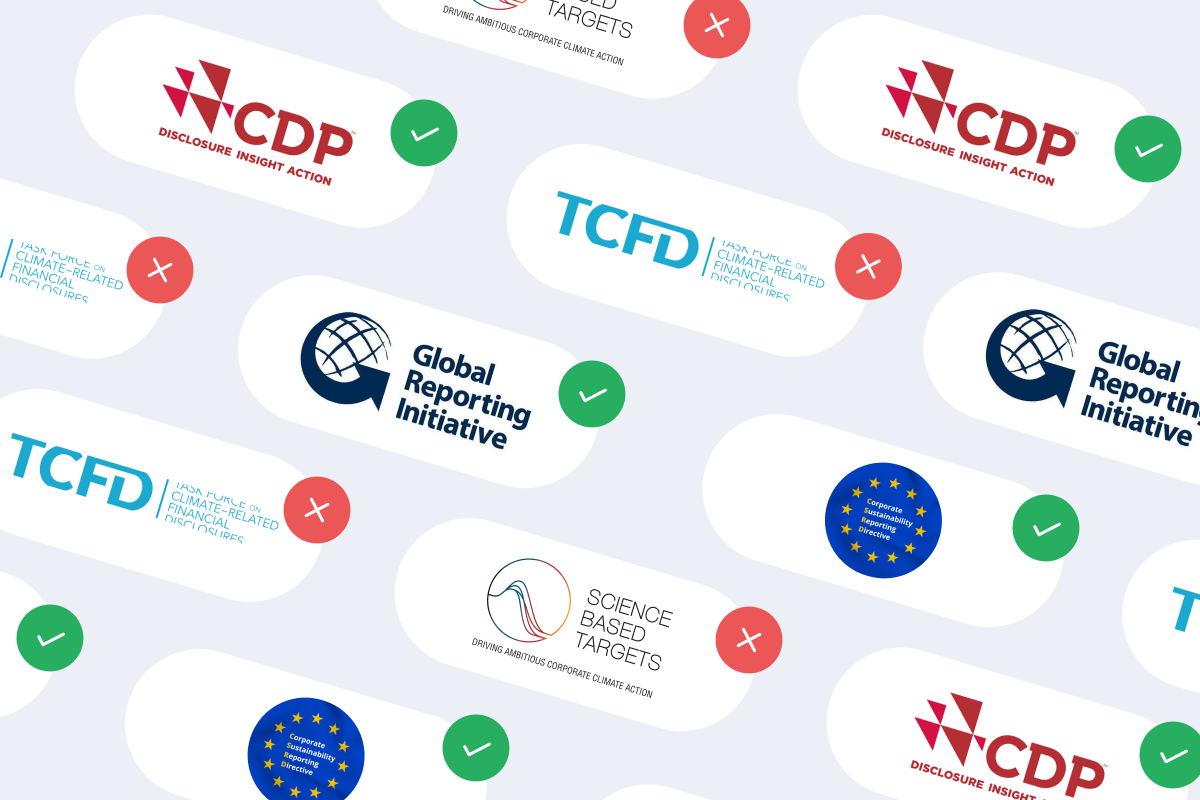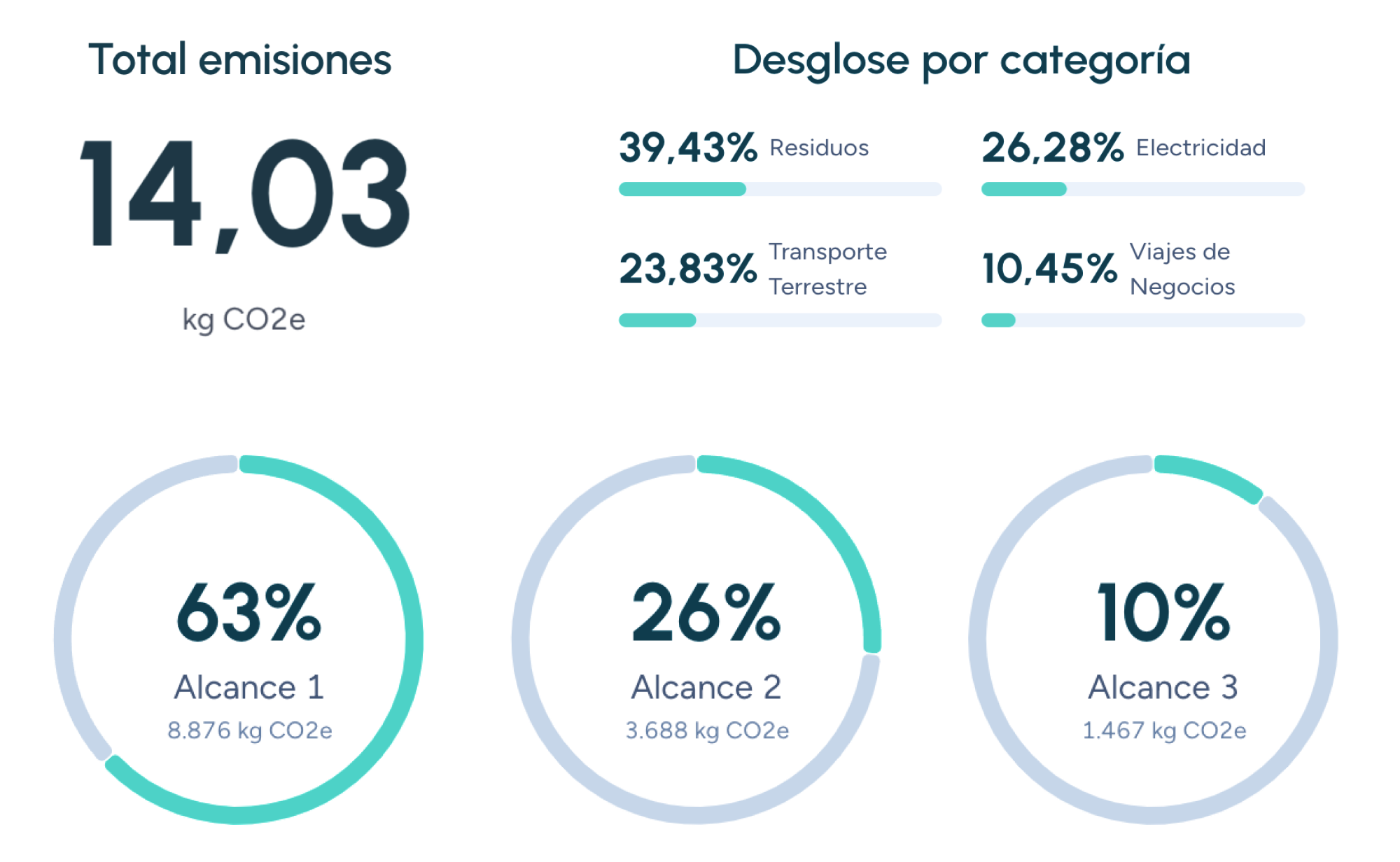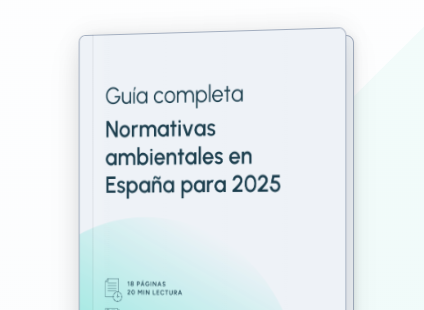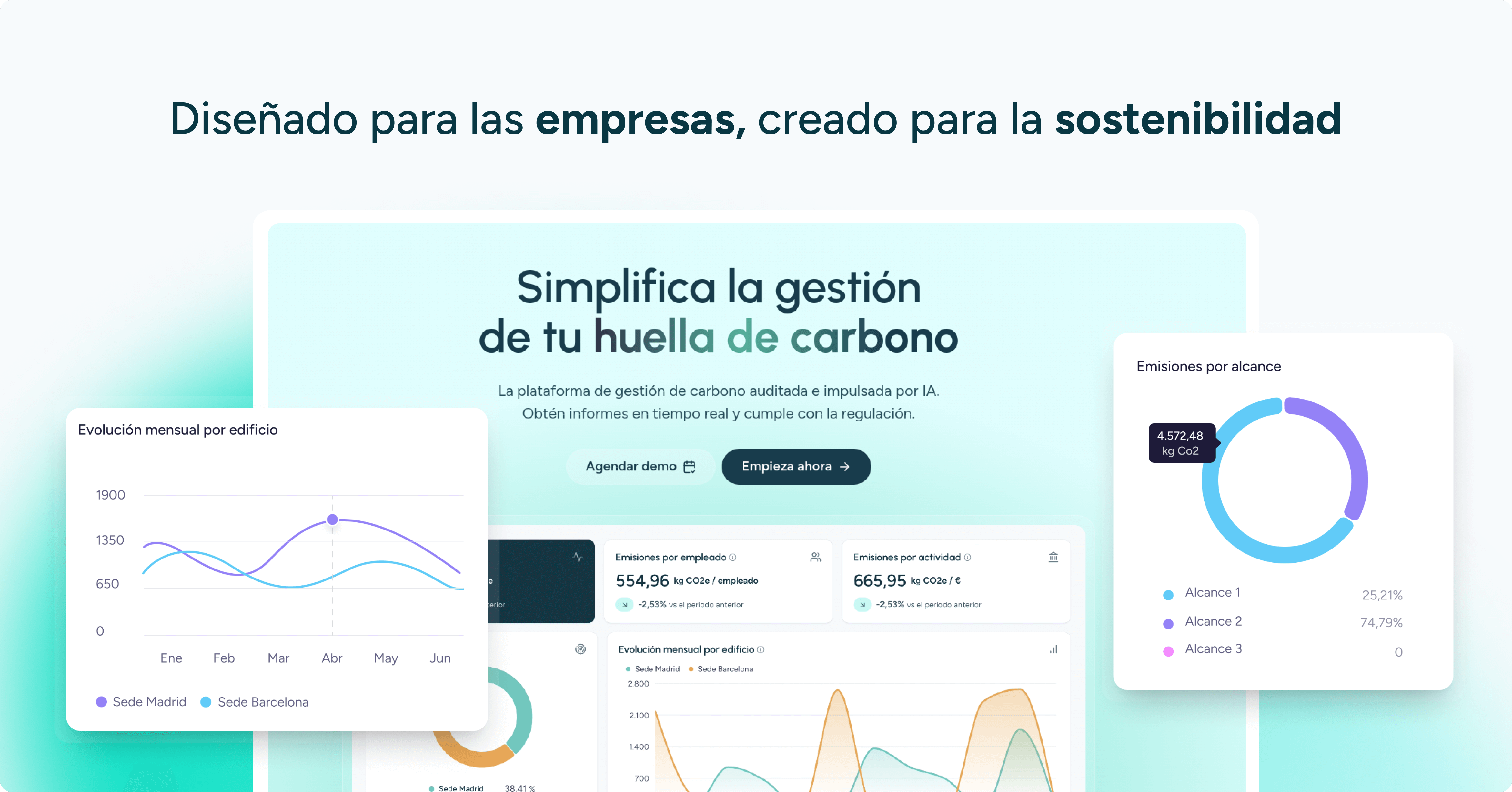Back to the blog
AI in Scope 3 Calculation: How to Overcome the Supplier Data Barrier
Paula Otero
Environmental and Sustainability Consultant
Scope 3 remains the biggest obstacle in corporate decarbonisation. Companies can control electricity consumption, electrify internal fleets, or optimise industrial processes, but none of this offsets a structural reality: between 75% and 90% of a company’s emissions come from its value chain.
However, calculating Scope 3 accurately has historically been almost impossible. The lack of primary data, low digitalisation among suppliers, reliance on generic emission factors, and manual spreadsheet-based workflows create significant errors, methodological inconsistencies, and in many cases, climate reports that cannot withstand rigorous audits.
Fortunately, artificial intelligence is changing this paradigm. Thanks to automated document processing, advanced imputation of missing data, and semantic verification, AI allows companies to build Scope 3 inventories that are more complete, more traceable, and more accurate.
In this article, we explain how to use AI to overcome the “data barrier” that has blocked thousands of organisations in their climate reporting.
If you want to learn more about digital tools, you can consult our guide to the best software for measuring product carbon footprint.
Why supplier data is still the main problem in Scope 3?
The issue does not lie in a single factor but in an inherently fragmented ecosystem. Most suppliers, especially SMEs, do not track their energy consumption, do not apply LCA methodologies, and lack internal systems capable of generating reliable primary data. When information is requested, responses often include incomplete documents, inconsistent formats, or rough estimates.
This problem is amplified by the dependence on email as the main communication channel. Information arrives in PDFs with varying levels of detail, outdated invoices, disorganised spreadsheets, or even smartphone photos. An internal team can spend weeks reviewing documents, correcting errors, identifying duplicates, and normalising units.
Additionally, most organisations rely on generic emission factors when primary data is not available. The problem is not only methodological: this imprecision impacts decision-making, SBTi target setting, and prioritisation of actions within the decarbonisation plan.
How AI transforms Scope 3 data collection and structuring
Artificial intelligence enhances every stage of the process: capture, cleaning, classification, imputation, and verification. Its value lies not only in speed but in its ability to turn unstructured data into calculation-ready environmental information.
Automated data capture
Computer vision systems and advanced OCR can read thousands of documents per month, such as invoices, technical datasheets, energy certificates, delivery notes, and customs documents, without human intervention. All of this is converted into structured data within seconds.
Normalisation and data cleaning
AI automatically identifies incorrect units, non-standard formats, impossible values, temporal inconsistencies, duplicate data, and metrics that do not match historical patterns.
Imputation of missing data with controlled accuracy
When suppliers fail to provide the required information, something that happens in more than 60% of cases, AI can generate estimated values based on:
- sectoral carbon intensity
- energy mix of the production country
- equivalent materials
- historical data from similar products
- changes in transport mode or energy efficiency
This process, when properly documented, is accepted by auditors as long as the methodology is explicit and traceability is provided.
Automatic verification and full traceability
Each data point is linked to the original document, supplier, Scope 3 category, algorithm used, and generation date, eliminating the risk of methodological greenwashing and strengthening the credibility of the climate report.
To learn how to communicate these results credibly, you can read our article on how to communicate your decarbonisation strategy while avoiding greenwashing.
Which Scope 3 categories benefit most from AI?
Although all categories improve, three in particular concentrate most of the impact:
Purchased goods and services (Category 1)
This is the most complex category and the one with the greatest weight in the inventory. AI allows companies to break down impact by material, composition, and geographic origin. A trained model analyses consumption and emission patterns for each product type and can calculate the impact of thousands of SKUs with a level of accuracy impossible to achieve manually.
Transportation and distribution (Categories 4 and 9)
AI analyses logistics routes, transit times, average speeds, vehicle types, multimodal combinations, and partial loads. This enables modelling of real-world emissions (not generic ones) based on operational patterns.
If you want to explore sector methodology in depth, we recommend reading our article: Implementing the GLEC Framework in Logistics: Emission Calculation and Fleet Optimisation.
Use of sold products (Category 11)
In sectors such as home appliances, HVAC, or mobility, AI can estimate energy consumption based on real usage profiles, climate data, hourly patterns, and efficiency curves, increasing the precision of the calculation and enabling improvement scenarios.
Strategic questions companies must ask before applying AI to Scope 3
Implementation is not just about adding technology, it requires a rigorous strategy. These are the key strategic questions an organisation should ask before applying AI to Scope 3 calculation:
- What level of granularity do we need? For high-impact sectors, the ideal is data by material, process, and supplier. AI does not eliminate methodological work—it multiplies it.
- Which suppliers account for 80% of the impact? In our consulting work, the pattern repeats: 20% of suppliers account for most emissions. AI helps identify and prioritise engagement with them.
- Which Scope 3 categories require more detail? Industry, food, fashion, and automotive require high granularity. Professional services, not as much. Defining this early prevents unnecessary investment.
- What level of automation can we achieve within a year? Organisations managing over 1,000 documents per month can automate 50–70% of the process within twelve months.
Which AI models provide the greatest value in Scope 3 calculation?
Choosing the right AI model largely determines the quality and accuracy of Scope 3 calculations. Not all algorithms serve the same function: some optimise data extraction, others improve imputation of missing information, and others guarantee verification and methodological coherence.
There are four essential types of models:
Document classification models
Identify document type, nature, and relevant content. This classification is critical for traceability and reduces categorisation errors.
Natural language processing models
Extract quantities, units, consumption, materials, and environmental attributes in complex contexts, even interpreting technical documents with non-linear structures.
Predictive models for data imputation
Generate robust estimates when primary data is missing. These models are trained with historical and sector datasets, reaching accuracy levels between 90% and 95%.
Anomaly detection models
Identify impossible, duplicated, or inconsistent values. This ensures data quality sufficient for CSRD, GRI, and SBTi audit requirements.
How to implement AI in Scope 3 calculation step by step
Implementing AI in Scope 3 calculation requires a structured approach that combines methodology, data, and technology. It’s not just about digitalising processes but redesigning how supply-chain information is collected, cleaned, and verified.
A robust implementation progresses through the following phases:
- Map existing data sources: Identify ERPs, internal databases, logistics portals, critical suppliers, and points where information is lost.
- Automate document capture: Set up automated pipelines to extract information from invoices, certificates, and datasheets without human intervention.
- Normalise and clean the data: Convert all units into coherent formats and eliminate structural errors using trained models.
- Impute missing data: Sustainable imputation (always traced and justified) enables companies to complete inventories that were previously impossible.
- Integrate the result into a reporting system: Ensure the model aligns with:
- CSRD ESRS E1
- GHG Protocol
- ISO 14064
- SBTi Corporate Net-Zero Standard
If you need a step-by-step guide, see our article: Corporate Sustainability Reporting Directive (CSRD): Everything You Need to Know.
What competitive advantages does AI provide beyond calculation?
Applying AI to Scope 3 does not only improve accuracy, it transforms how organisations make strategic decisions. AI generates tangible competitive advantages that impact audits, operational efficiency, corporate communication, and decarbonisation planning.
- Faster external audits: Automatic traceability cuts verification time in half.
- Reduced reputational risk: Transparent reporting prevents inconsistencies that could be interpreted as greenwashing.
- Scenario simulation for reduction: AI identifies actionable measures: material substitution, supplier changes, logistics electrification, or process redesign.
- Integration with procurement and logistics: Procurement teams can access carbon intensity data for each supplier to prioritise sustainable purchasing.
AI in Scope 3 Calculation: An Opportunity to Improve Accuracy
Artificial intelligence does not replace the GHG Protocol methodology or the need for primary data, but it does eliminate the greatest operational and cultural barrier in Scope 3: the lack of reliable, complete, and verifiable information.
Integrating AI into reporting systems offers a competitive advantage: more accurate inventories, faster audits, more efficient processes, and strategic decisions that accelerate real decarbonisation.
The future of climate reporting will inevitably be hybrid: more digital suppliers, more accessible data, and AI as the common layer to interpret, verify, and model it all.
FAQs about AI in Scope 3 calculation
Can AI replace suppliers’ primary data?
No. AI reduces dependence but does not eliminate the need for primary data. However, it enables progress even when direct information is insufficient.
Do auditors accept the use of AI in Scope 3 calculation?
Yes, as long as there is traceability, documentation, and methodological justification.
Which sectors benefit most from AI in Scope 3?
Chemicals, automotive, fashion, food, construction, energy, and logistics.
What level of accuracy can AI achieve in Scope 3 calculation?
Between 90% and 95%.
Does AI reduce operational costs?
In most cases, by 30% to 50% annually.
Paula Otero
Environmental and Sustainability Consultant
About the author
Biologist from the University of Santiago de Compostela with a Master’s degree in Natural Environment Management and Conservation from the University of Cádiz. After collaborating in university studies and working as an environmental consultant, I now apply my expertise at Manglai. I specialize in leading sustainability projects focused on the Sustainable Development Goals for companies. I advise clients on carbon footprint measurement and reduction, contribute to the development of our platform, and conduct internal training. My experience combines scientific rigor with practical applicability in the business sector.
Content
Companies that already trust manglai





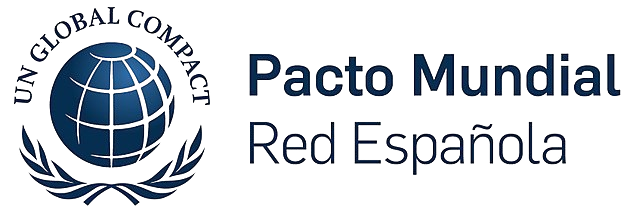








Market-based vs. Location-based Emissions Accounting
Understand the difference between Market-based and Location-based Emissions Accounting methods.
12 May, 2025
The Sustainable Apparel Coalition: Impact on the fashion industry
Explore how the coalition promotes ethical sourcing and sustainability in fashion.
23 April, 2025
Fugitive emissions: Identifying and managing leaks
Understand fugitive emissions, their impact, and mitigation strategies for businesses.
16 April, 2025
Guiding businesses towards net-zero emissions through AI-driven solutions.
© 2025 Manglai. All rights reserved
Política de Privacidad